
A matrix is a diagram that is defined as a new management planning tool for analyzing and displaying the relationship between data sets. It is an organization chart that combines the functional (which divides employees by specialization) and divisional (which separates employees based on their work output) organizational structures.
[bb_toc content=”][/bb_toc]
Matrix Definition & Meaning
A matrix is a set of numbers arranged in rows and columns to form a rectangular array which is called the elements or entries of the matrix.
A matrix is a structure that combines two or more organizational structures that enables the arrangement of business so it can report relationships as a grid rather than the traditional hierarchical structure.
What Is A Matrix?
A matrix combines the traditional departments shown in functional structures with project teams which display the workflow of individuals across teams and projects as well as their own departments. It helps in improving communication across the entire company and allows an employee to use his skills within a variety of contexts. Using a matrix also prevents regular meetings of departments which reduces costs and improves coordination.
10 Types Of Matrix
Marketing Matrix
A Marketing Matrix is the combination of product, price, place, and promotion for various business enterprises or ventures. It is a visualization tool that helps businesses and collaborators in team building, tactical planning, and the overall decision-making process. This matrix also enables the enhanced component of the marketing mix which take new product or service to market.
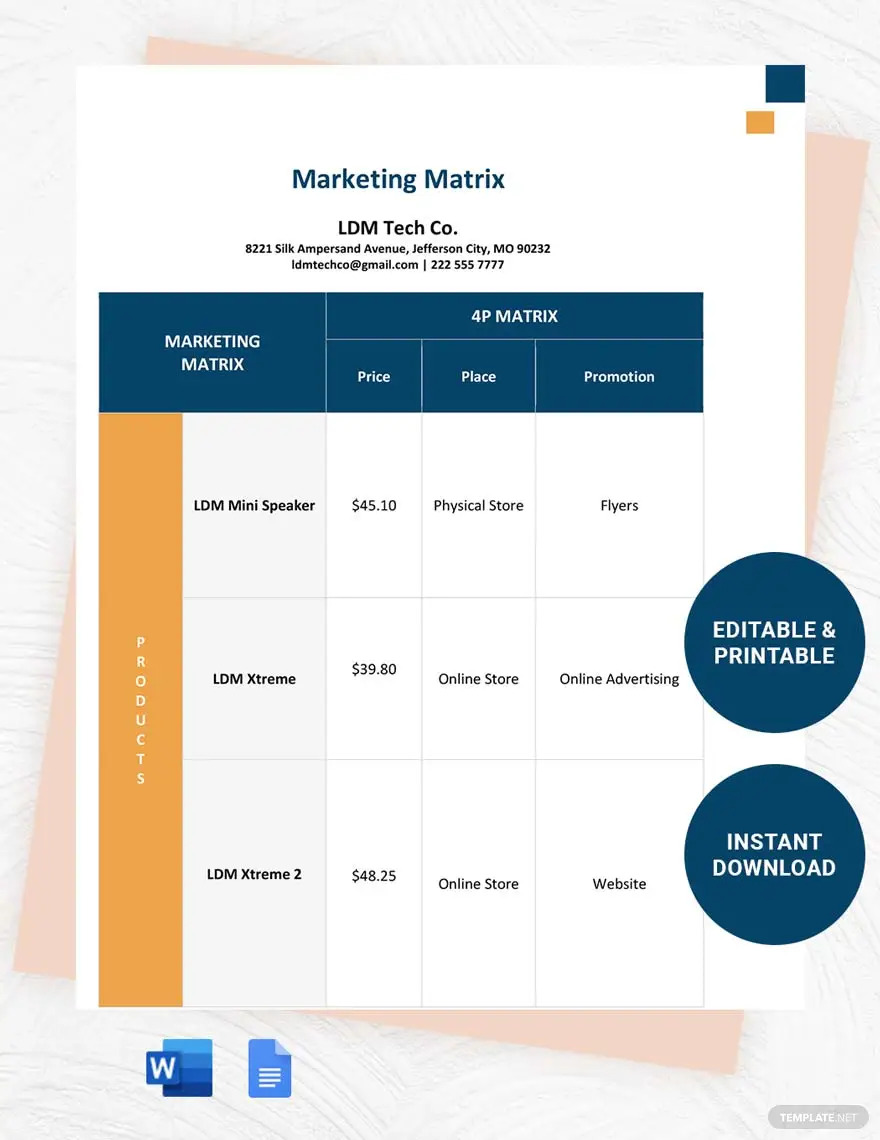
Comparison Matrix
A Comparison Matrix is used to visualize the similarities and differences between products and services as well as complex and abstract concepts such as strategies and ideas. It helps in organizing and clarifying the factors that are being compared. With a Comparison Matrix, a clear description and comparison of attributes and characteristics of items can be provided.
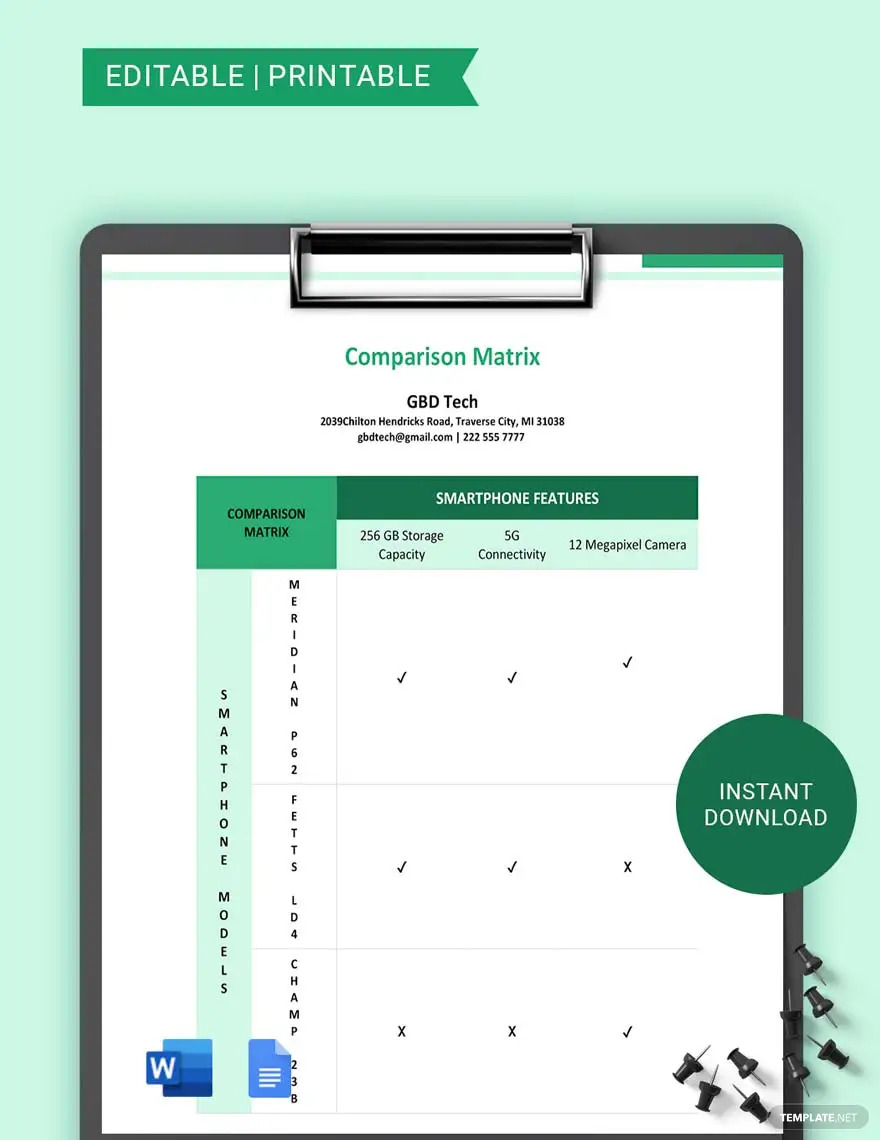
Communication Matrix
A Communication Matrix is a document that summarizes the communication management plan for a project. It improves the communication between departments, enhanced the efficiency of project resources, and faster project-related decision-making. A Communication Matrix is used to ensure that all project stakeholders are provided with valuable information in a timely and effective manner.
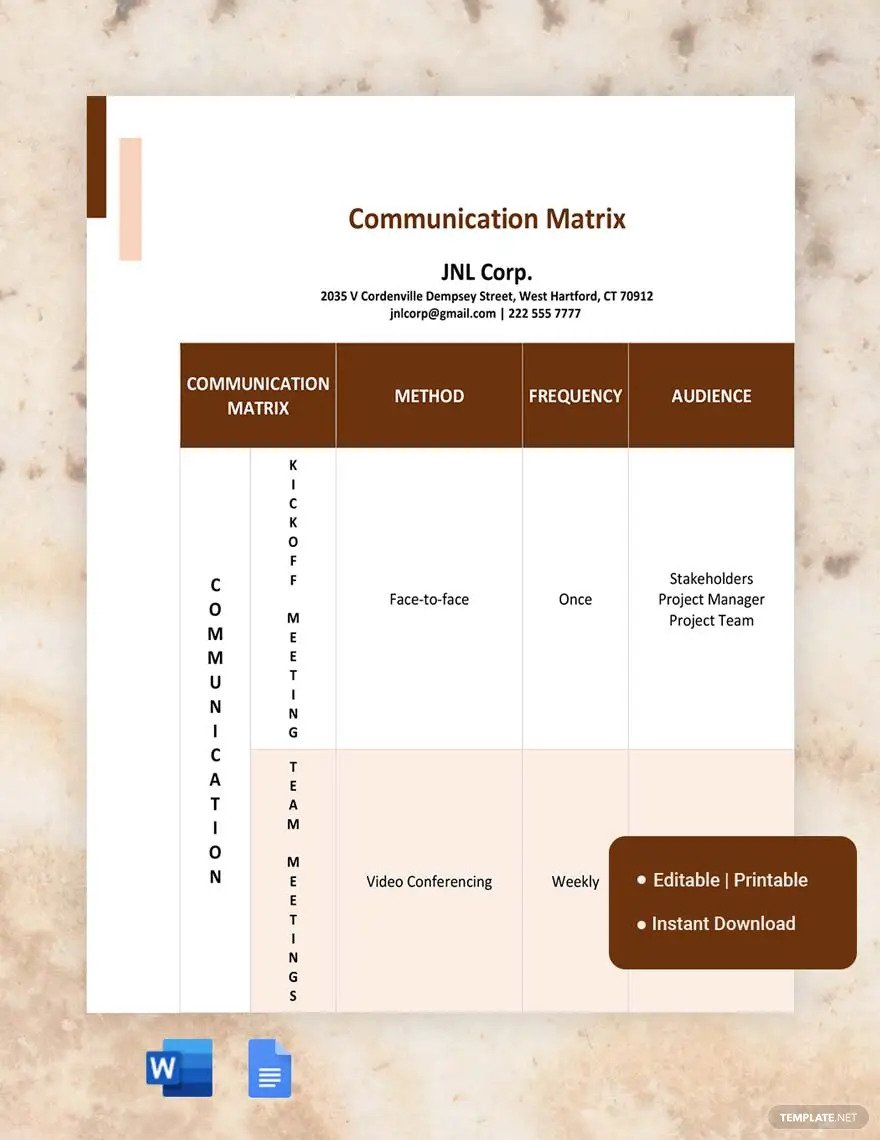
Task Matrix
A Task Matrix is a list of activities that users complete and often includes which users perform which task. It enables an easier understanding of the importance of various tasks a user can perform and accomplish within a digital product. With a Task Matrix, tasks can be visualized as they progress to completion.
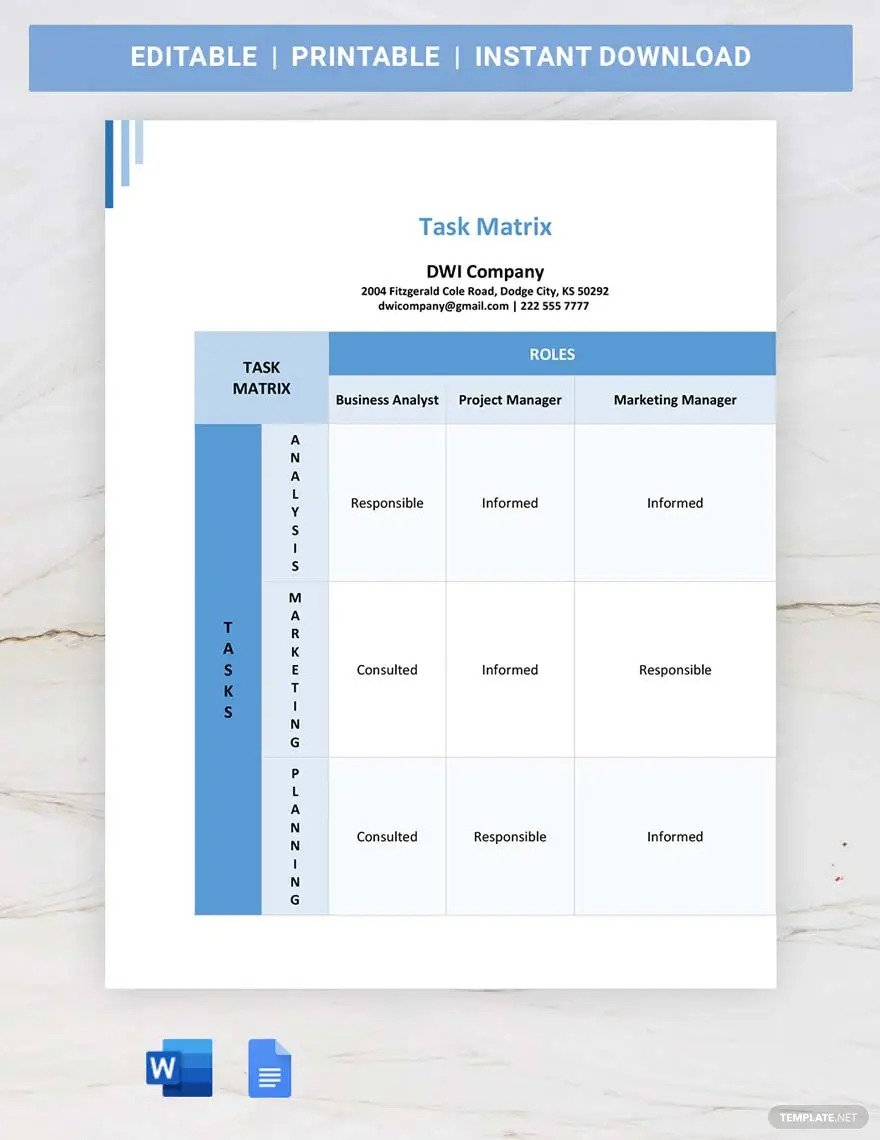
Product Matrix
A Product Matrix is a tool that enables the visualization of a company’s products as well as gives them the opportunity to develop new products. It is a chart that makes an easier comparison of products including their features, prices, market segments, and more. It can be created with a standard spreadsheet where each row represents a product and columns that have various parameters that may or may not apply to a product.
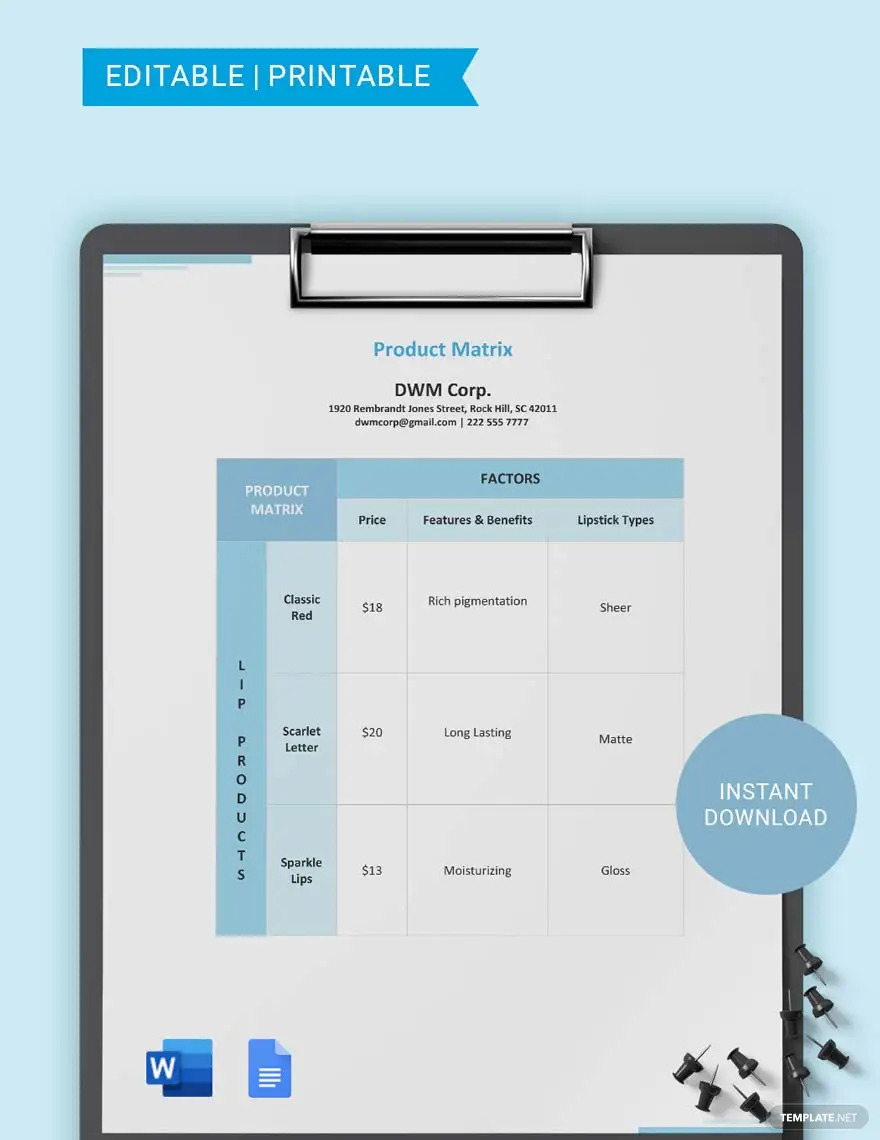
Organizational Matrix
An Organizational Matrix visually represents a company structure where teams report to multiple leaders. This shows the flow of how team members report to a project manager and their department head. It allows open communication between teams and helps companies create ingenious products and services.
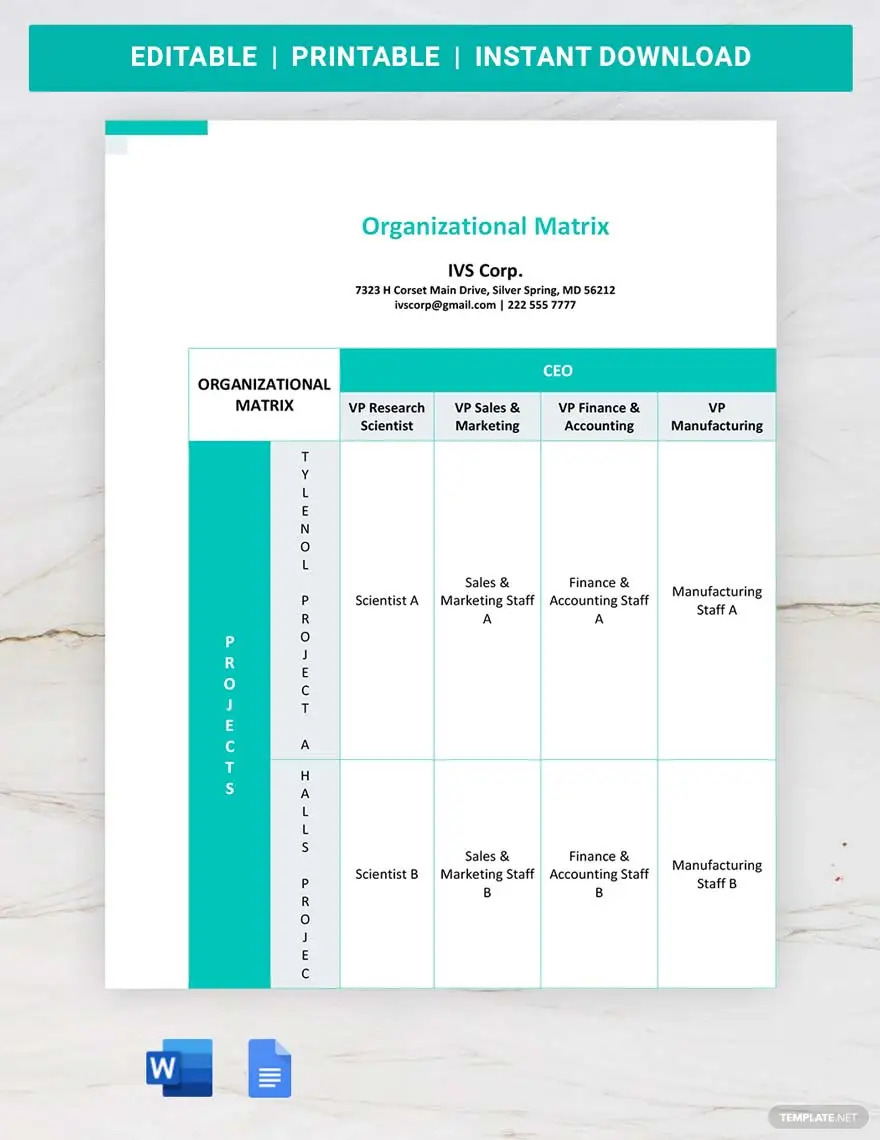
Stakeholder Matrix
A Stakeholder Matrix is used as a project management tool that analyzes a project stakeholder to identify necessary actions to align their goals with the project. It is also known as stakeholder which involves plotting stakeholders on and X and Y axis using two intersecting variables. Using a Stakeholder Matrix creates an accessible point of reference, enables specificity with only a few variables, takes minimal time and effort to make, and keeps everyone on the team engaged.
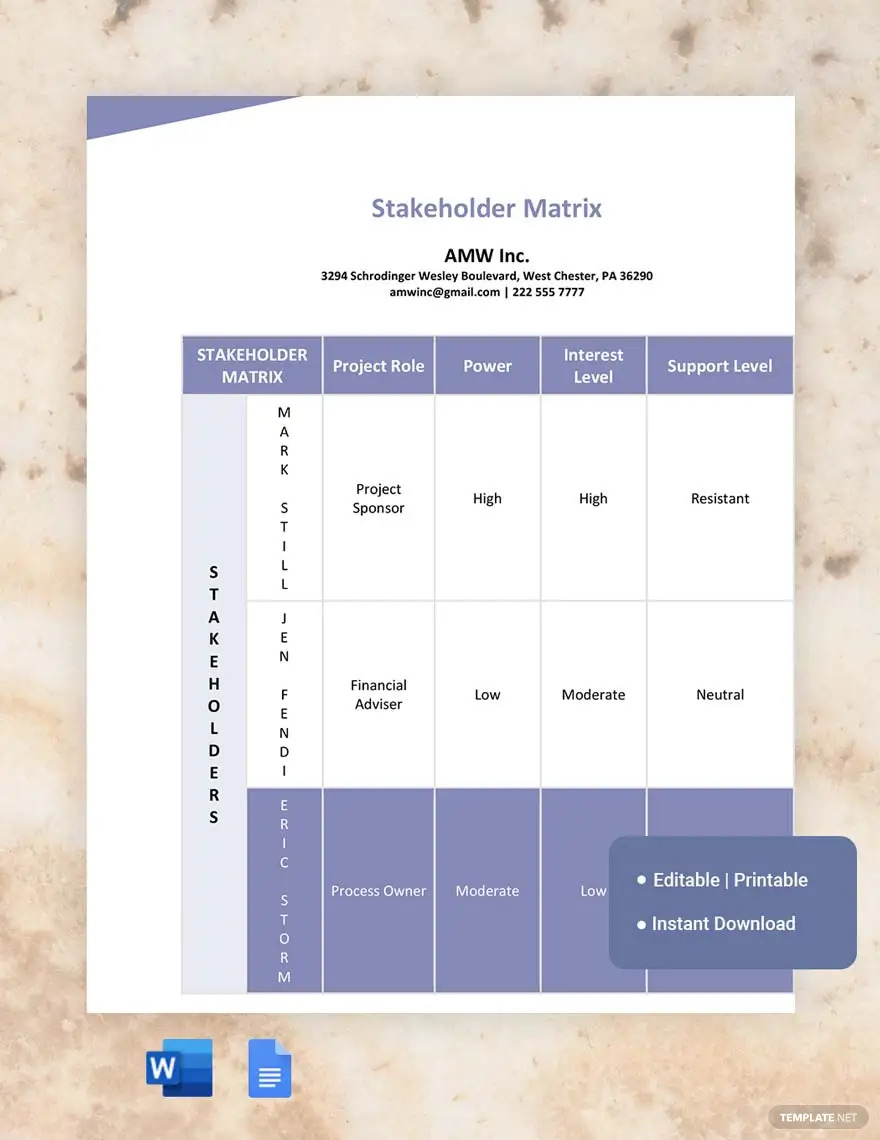
Eisenhower Matrix
The Eisenhower Matrix is used as a productivity, prioritization, and time management tool which is designed to help in prioritizing a list of tasks or agenda. Also called as Urgent-Importance Matrix, the Eisenhower Matrix consists of a four-box square with an x-axis labeled Urgent and Not Urgent and the y-axis labeled Important and Not Important. This matrix allows individuals or teams to figure out how they should use their time.
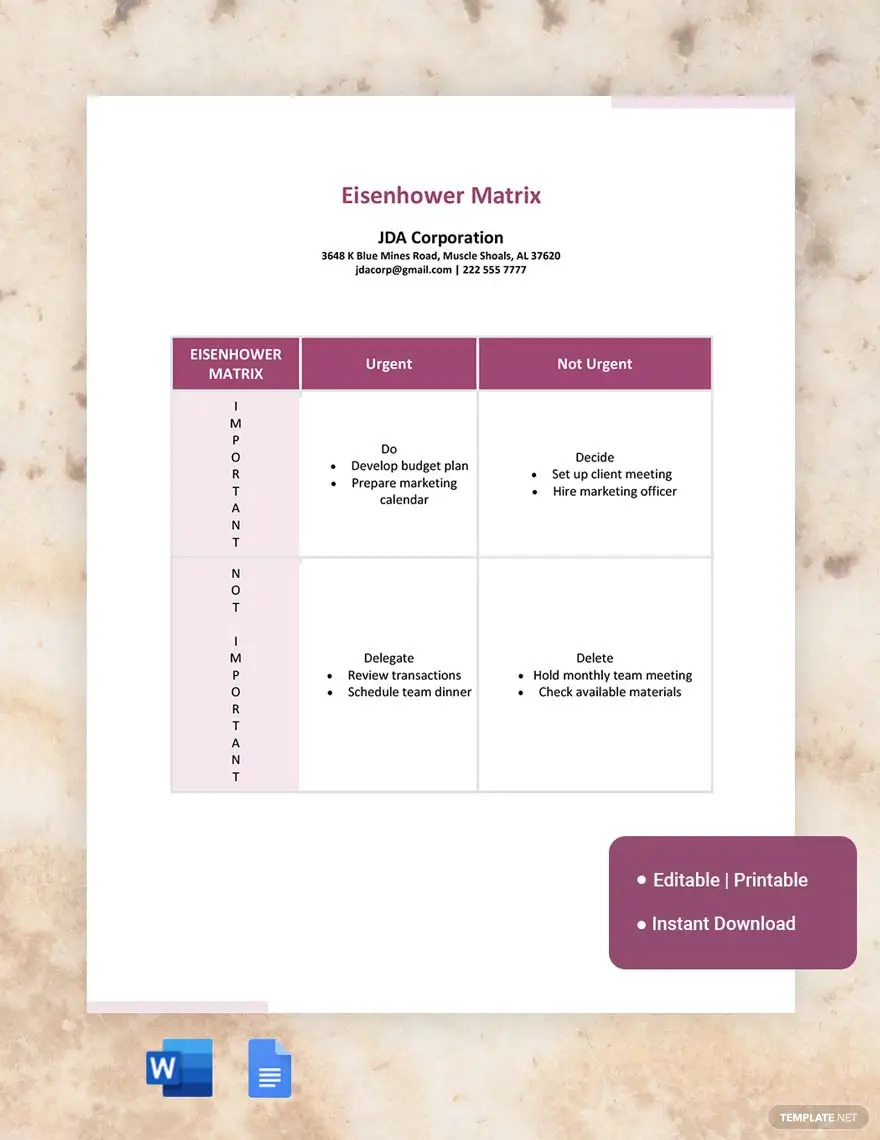
Decision Matrix
A Decision Matrix is used as a decision-making tool that evaluates and prioritizes a list of options. Teams can establish a list of criteria and then evaluates each option against those criteria. A Decision Matrix is ideal to use to assess a situation from a logical viewpoint with enough comparable variables to weigh.
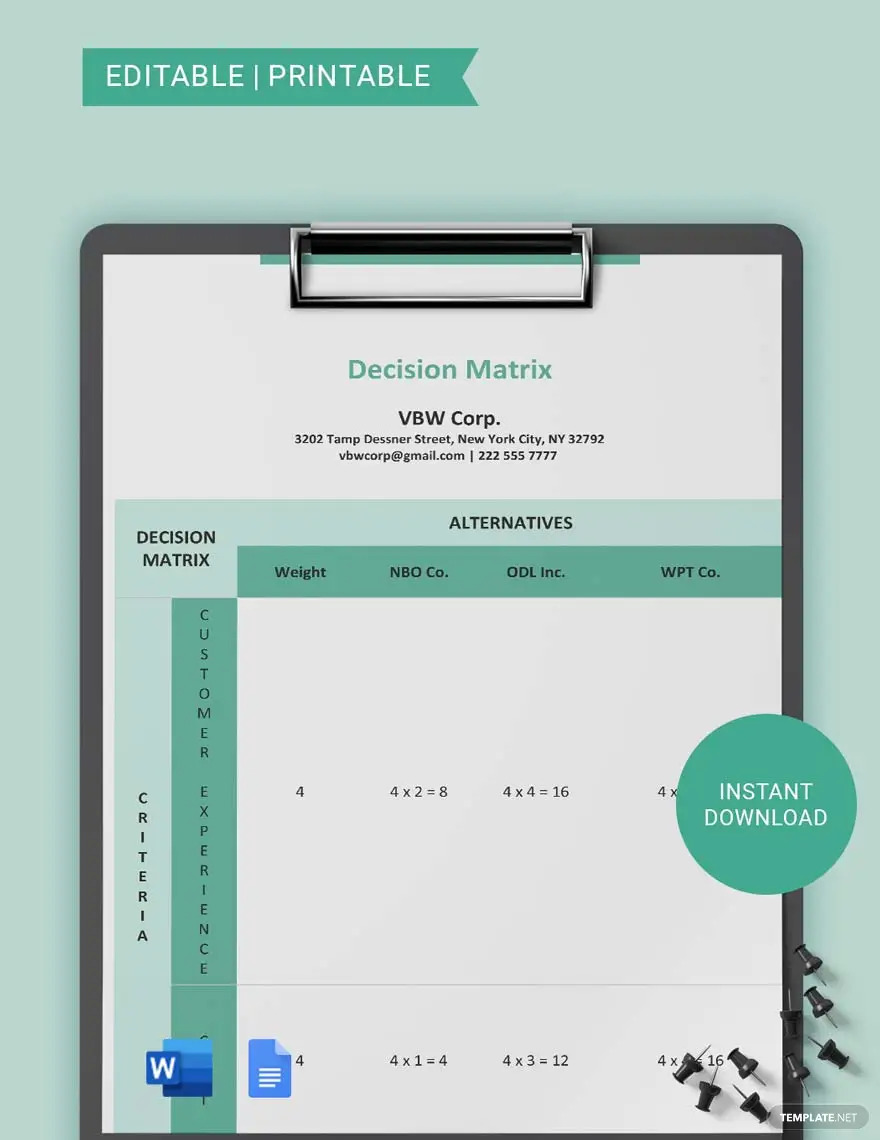
Vendor Evaluation Matrix
The Vendor Evaluation Matrix helps a company determine if a prospective vendor and supplier can meet their organizational standards and obligations under a contract. It helps in finding low-risk resources for high-quality products and services as well as developing long-term business relationships. This matrix also helps in risk management of regulatory compliance, the scope of service and contract compliance, and security and cyber risk.
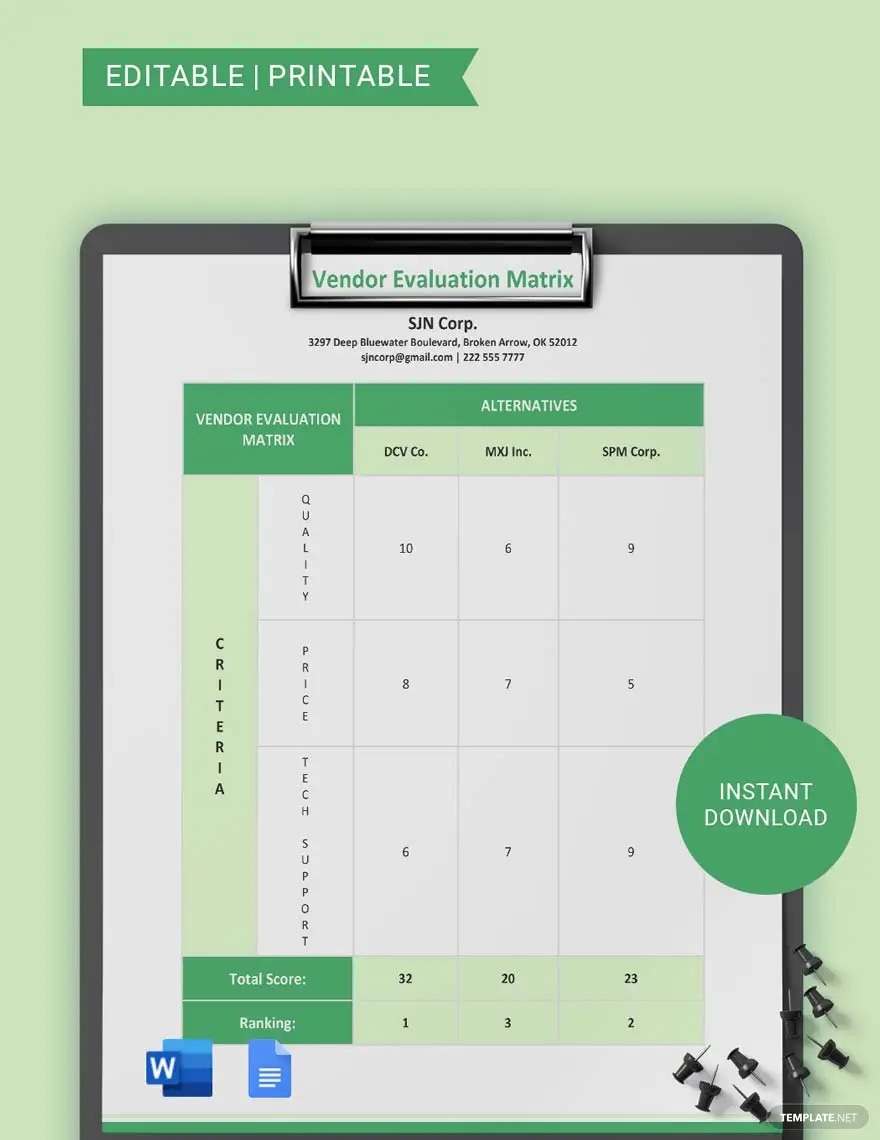
Matrix Uses, Purpose, Importance
Matrixes enable companies to divide their employees into teams based on specific products or projects. It allows better communication between different departments and divisions within the company, unlike the traditional corporate structure and hierarchies that often lead to isolated communication between employees of the same department. People can also share their knowledge, expertise, and skills as they can move between projects or teams when needed.
Enables flexibility between departments
Matrixes excel at bringing the right people with the right skills which can result in employee skill development, alignment across departments, and integration of HR and DEIB. as employees can move between projects and teams as needed, they can share their expertise with a large number of people. It also shows teams how they work and removes barriers to formal processes.
Provides efficient and effective use of resources
Using matrixes can best utilize manpower resources in a more efficient and effective way. Employees can move between projects and teams which enables them to learn a new set of skills. Doing this help employees explore various skills which can make them more suitable for more than one role in the company.
Displays the flow of information
Matrixes visually display the flow of information in a company. The flow of information given by the higher authorities will be circulated both downwards and sideward. Every employee, horizontally and vertically, will be in the loop for a project and they will be informed about the flow of actions that are implemented during the process of completing projects.
Provides open communication
Matrixes require employees to communicate directly with both their functional and project supervisors which ensures information is openly shared. It allows leaders and teammates to freely share information which enables leaders to make more informed decisions. Doing this also ensures that projects will be accomplished with great success.
Enhances employee engagement and morale
The matrix structure enables employees to broaden their skill set, knowledge, and experience with other teams. Using this also results in higher employee engagement, consistent employee growth, and increased team performance and profitability. When an employee is engaged in their tasks, it can lead to an increase in productivity and a decrease in turnover which also benefits the company.
What’s In A Matrix? Parts?
Product
This part of a matrix refers to the products and services offered by the company which enables customers to understand the features, advantages, and benefits they can get when they buy the offered product or service.
Price
This refers to the pricing strategy for the product or service and how it will affect the customers as well as displays the discounts, payment arrangements, credit terms, and any price-matching services offered.
Promotion
These are the activities that make a business more known to consumers which include items like sponsorships, advertising, and public relations activities.
Location
The location shows the place where the product or service of the company is displayed, created, sold, or distributed which enables businesses to consider how accessible their product or service is to ensure that customers can easily find them.
Employees
This part refers to the staff, salesperson, and those who work for the company who are usually the frontline in managing customer service.
How To Design A Matrix?
1. Choose a Matrix Size.
2. Decide on the purpose of the matrix.
3. Select a Matrix Template.
4. Modify the structure of the matrix template by adding or removing information fields.
5. Add columns or rows if needed.
6. Include additional products if you have any.
7. Finalize and download it for printing.
Matrix Vs. Comparison
A matrix is an organizational structure of a company that shows the reporting relationships of the employees, team leaders, managers, and other departments.
A comparison is used by businesses to measure the financial relationships between variables over two or more reporting periods and identifies their competitive positions.
What’s The Difference Between Matrix, Metrics, and Table?
A matrix is a series of columns and rows that displays a visual representation of possible solutions by weighing variables based on their importance.
A metric is a quantifiable measure that businesses use to track, monitor, and assess the success of different business processes as well as a way to communicate an organization’s progress towards a certain objective.
A table is a data structure used to organize information into rows and columns which can also be used to store and display data in a structured format.
Matrix sizes
Composing a matrix should be done in the correct paper size to maintain consistency in the displayed information across the entire organization.
Letter (8.5 × 11 in)
A4 (8.3 × 11.7 in)
Matrix Ideas & Examples
Matrixes must visually represent a clear and concise flow of information of a company so employees can easily understand their reporting relationships with their leaders.
- Employee Matrix Ideas and Examples
- Project Matrix Ideas and Examples
- Business Matrix Ideas and Examples
- Training Matrix Ideas and Examples
- Research Matrix Ideas and Examples
- Product Matrix Ideas and Examples
- Change Matrix Ideas and Examples
- Price Matrix Ideas and Examples
- Evaluation Matrix Ideas and Examples
- Priority Matrix Ideas and Examples
- Escalation Matrix Ideas and Examples
FAQs
What is a matrix presentation?
A matrix presentation, which can be created using the PowerPoint application, is used to show relationships between concepts or data.
What should be on a Training Matrix?
A Training Matrix shows the qualifications of each member of your workforce, which includes both the new hires and old employees, and the status of the qualification, whether it’s valid, expiring, or expired.
What is a Business Matrix diagram?
A Business Matrix diagram is a management planning tool used to compare and identify the relationships between various sets of data in a business.
How do you create a Risk Matrix in Word?
To create a Risk Matrix in Word, choose a matrix size, decide on its purpose, select a matrix template, alter its structure according to the information you need, add columns and rows if you require, and include additional products if you have, then print.
What are the different matrices in marketing?
The different matrices in marketing include Market Penetration, Product Development, Market Development, and Diversification.
What is a Role Matrix?
A Role Matrix displays all roles and activities which details which role has access to which activity and is used as a reference point for checks and maintaining balance within the system.
What is a Responsibility Assignment Matrix?
The Responsibility Assignment Matrix, which is also called the RACI chart or RACI matrix, describes the participation of different organizations, people, and their roles in completing tasks or deliverables for a project.
How to develop a Risk Assessment Matrix?
To develop a Risk Assessment Matrix, identify first the hazards, calculate their possibility using brackets such as Unlikely, Seldom, Occasional, Likely, and Definite, calculate consequences using brackets like Insignificant, Marginal, Moderate, Critical, and Catastrophic, and calculate risk rating using the Low, Medium, High, and Extreme brackets, create an action plan which can also note the key team members, preventive measures, and response plan, then plug those data into a matrix.
How to Overcome Procrastination With the Eisenhower Matrix?
To overcome procrastination with Eisenhower Matrix, set clear deadlines and build your tasks and activities into your schedule but also make sure to provide time to finish them to a high standard with a buffer for unexpected demands.
Why use a communication matrix?
Using a Communication Matrix allows you to outline and set expectations for communication points that will take place during a project while keeping everyone involved with updated information.

